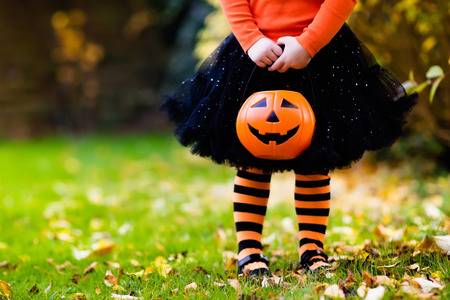Return to News & Updates

Halloween Safety

Adam Heinz, Director of Clinical Communication, shares REMSA’s top Halloween safety tips. Read below for more safe ideas.
Trick or Treating Safety Tips:
- Children should go out during daylight hours only unless accompanied by a responsible adult.
- Plan a safe route so parents know where their older kids will be at all times. Set a time for their return home. Make sure that children are old enough and responsible enough to go out by themselves.
- Let your children know not to cut through back alleys and fields. Make sure they know to stay in populated places and not go off the beaten track. Stay in well-lighted areas.
- Stop only at familiar houses in your own neighborhood unless an adult accompanies them.
- Small children should never be allowed to go out alone on Halloween. Make sure an older sibling or adult is with them.
- Instruct your children not to eat any treats until they bring them home to be examined by you.
- Instruct your child to never go into the home of a stranger or get into their car.
- Make sure your child carries a flashlight, glow stick or has reflective tape on their costume to make them more visible to cars.
- Let them know that they should stay together as a group if going out to Trick or Treat without an adult.
Parent Tips:
- Know the route your children will take if you aren’t with them.
- The best bet is to make sure that an adult is with them. If not, see if a responsible teen-aged sibling can go along.
- Know what other activities a child may be attending, such as parties, school or mall functions.
- Make sure you set a time when they should return home. Make sure they know how important it is for them to be home on time.
- Explain to children the difference between tricks and vandalism. Throwing eggs at a house may seem like fun but they need to know the other side of the coin as well, clean up, damages or a trip in a police car can ruin Halloween. If you catch them vandalizing, make them clean up the mess they’ve made. Remind them that vandalism is a crime for which they could be arrested.
- Explain to your kids that animal cruelty is not acceptable. Kids may know this on their own, but peer pressure can be a bad thing. Make sure that they know that harming animals is not only morally wrong but also punishable by law and will not be tolerated.
Child Tips:
- Help your child pick out or make a costume that will be safe. Make sure it is fireproof and that the eyeholes are large enough for good peripheral vision.
- If you set jack-o-lanterns on your porch with candles in them, make sure that they are far enough out of the way so that kids’ costumes won’t accidentally catch fire.
- Make sure that if your child is carrying a prop, such as a scythe or a pitchfork, that the tips are smooth and flexible enough to not cause injury if fallen on.
- Children always want to help carve the pumpkin. Small children shouldn’t be allowed to use a sharp knife to cut the top or the face. It’s best to let them clean out the pumpkin and draw a face on it, which you can then carve for them.
- Treating your kids to a spooky Halloween dinner will make them less likely to eat the candy they collect before you have a chance to check it for them.
- Remind your kids before they leave to Trick or Treat of the basic everyday safety tips, such as not getting into cars or talking to strangers, watching both ways before crossing streets and crossing when the lights tell you to. This will help make them safer when out on Halloween.
